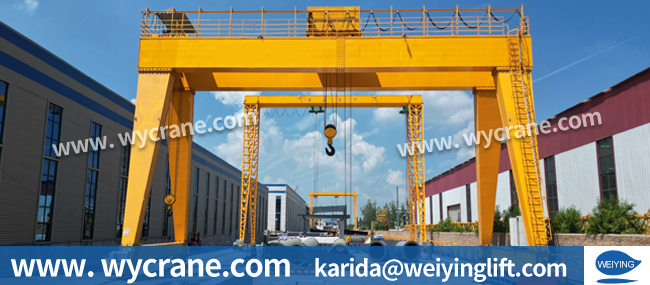Regular repair is vital to ensure the safe and efficient operation of any crane. Over time, even the most reliable equipment may show signs of wear or malfunction. Identifying these warning signs early can help prevent costly downtime, extend the lifespan of your crane, and protect the safety of your workers. Here are seven key indicators that your crane may need repair.
If your crane starts producing grinding, squealing, or knocking sounds during operation, it’s a clear signal that something is not right. These unusual noises often come from worn-out bearings, misaligned gears, or insufficient lubrication.
For example, a bridge crane working in a steel plant may start to grind when lifting heavy loads—often because the wire rope sheaves are dry or the gearbox is misaligned. If ignored, such friction can damage gear teeth or cause bearing seizure, leading to sudden breakdowns in the middle of production.
Regular inspection of moving parts and timely lubrication can prevent such mechanical failures and keep your crane operating smoothly and quietly.
A well-maintained crane should operate smoothly with minimal vibration. If you notice shaking, rattling, or uneven motion, it could indicate misalignment of components, loose bolts, or imbalance in the hoisting mechanism.
Prolonged vibration is more than just a nuisance—it can cause fatigue cracks in structural parts, especially on the bridge girders or trolley frame. In one case, excessive vibration in a gantry crane led to bolt loosening on the wheel assembly, eventually causing derailment during operation.
Addressing the root cause early—through balancing, tightening, and alignment—helps prevent such safety risks and expensive repairs later.

Cranes naturally generate heat during operation, but if components such as motors, brakes, or hydraulic systems become excessively hot, it suggests overloading, poor ventilation, or friction from worn parts.
An overheated hoist motor, for instance, may trip frequently or even burn its winding insulation, leading to costly downtime. Overheating also degrades lubricants, which can cause further friction and wear.
Operators should regularly monitor temperature levels and ensure that cooling fans, air vents, and hydraulic systems are functioning properly. Preventive actions like cleaning filters or reducing load cycles can significantly extend your crane’s service life.
When your crane starts moving sluggishly, hesitating during lifting, or jerking unexpectedly, the problem often lies in the control system, hydraulic pressure, or electrical circuits.
A mobile crane may lift more slowly than usual because of air trapped in the hydraulic line or a failing pump. Similarly, irregular movement of the trolley could stem from electrical relay faults or worn contactors.
Such performance issues reduce efficiency and can create unsafe conditions—especially during precise load positioning. Periodic calibration and control system testing are essential to ensure smooth, accurate, and safe operation.
Hydraulic or lubrication oil leaks are among the most visible—and dangerous—warning signs. Even small leaks can result in reduced lifting pressure, component contamination, or slippery floors that endanger workers.
In many cases, leaks appear at hose joints, cylinder seals, or worn-out connectors. A leaking hydraulic hose, if left unchecked, could burst under high pressure, leading to sudden loss of lifting power or oil spray that causes injuries.
Inspect your hoses, seals, and fittings frequently. If you notice oil stains under the crane or pressure drops in the system, stop operation immediately and fix the leak before resuming work.
Every crane endures constant mechanical stress, and over time, parts such as wire ropes, hooks, brakes, and gears inevitably wear out.
Neglecting visible damage—like frayed wire strands, cracked hooks, or worn brake pads—can lead to catastrophic accidents. For instance, a fatigued wire rope on an overhead crane may snap under load, dropping several tons of material and endangering everyone nearby.
Routine part inspection and timely replacement are critical. Keeping a detailed maintenance log helps ensure that components are replaced before failure occurs, protecting both workers and equipment.
If your crane shows inconsistent power output, flickering control lights, or difficulty starting, it could indicate issues in the electrical or fuel system.
Loose wiring connections, damaged insulation, or corroded terminals can interrupt electrical flow and even spark short circuits. Similarly, clogged fuel filters or bad injectors in diesel-powered cranes can cause loss of power and stalling.
In one documented case, a faulty relay caused an overhead crane to lose power mid-lift—forcing an emergency stop to avoid a dropped load. Regular electrical inspections, insulation testing, and fuel system cleaning are essential preventive measures to maintain reliability and safety.
Timely maintenance is the foundation of crane safety and performance. Paying attention to early warning signs—such as abnormal noise, vibration, overheating, or fluid leaks—allows operators to fix problems before they escalate into accidents or costly repairs.
Establishing a structured inspection and maintenance schedule helps reduce downtime, improve efficiency, and ensure the long-term stability of your equipment.
A well-maintained crane is not just a piece of machinery—it’s the backbone of a safe, reliable, and productive work environment. By recognizing these seven signs and taking prompt action, you can safeguard your workers, your operations, and your investment.
With 34 years of manufacturing experience and 12 years of export expertise, we have built a dual advantage of professional qualifications and a global presence. Our business covers more than 100 countries and regions across Asia, Europe, the Americas, Africa, and Oceania. We are certified under the ISO management system and hold CE product certifications. Our main product lines include six major series—electric hoists, electric winches, gantry cranes, bridge cranes, marine cranes, and portal cranes—comprising nearly 100 different models.
If you want to learn more, please contact us.
E-mail address: karida@weiyinglift.com
Website: www.wycrane.com